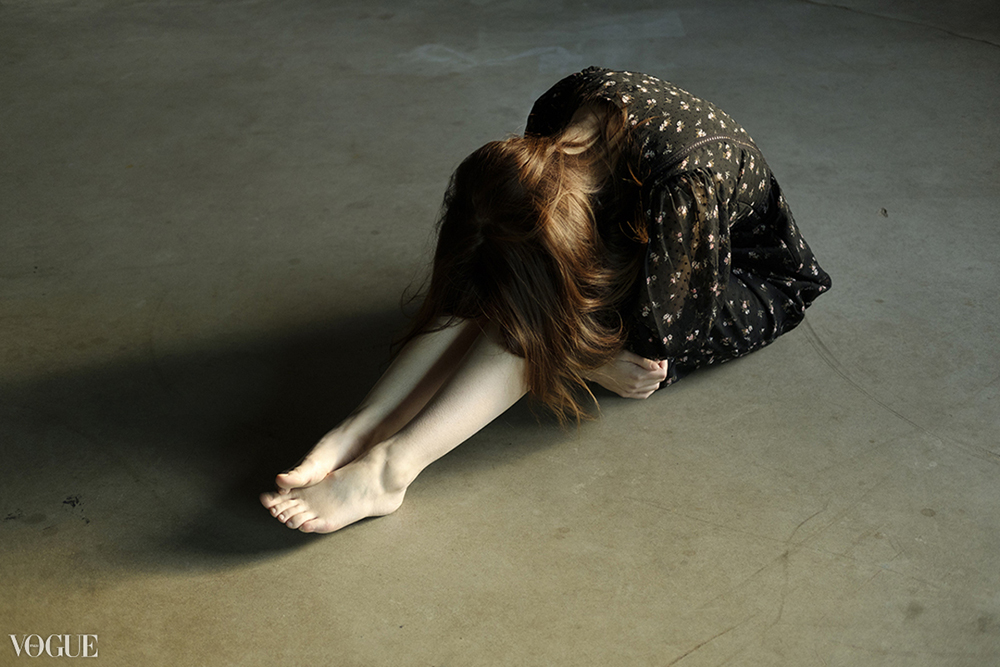The Difference between Editorial and Photojournalistic Wedding Photography
As a photographer with a wealth of experience shooting with different subjects, two of the common buzz words that come up are photojournalistic and editorial photography, especially when it pertains to weddings. What do both of these terms actually mean? And what do they actually entail?
Oftentimes, photojournalistic refers to a style of photography that captures the moments of the wedding day with minimal input from the photographer. This style pays homage to street photography, where photographers would often wait and anticipate the right moments to capture. Just like street photography, photojournalistic photography is mainly taken without intervention or inputs from the subjects. Certainly, there are many beautiful images that are captured this way. However, the best images that result from this style require a combination of the ideal moment (to highlight something of interest), background/location (for good composition), and lighting (to bring the image to life). In many cases, especially without much input from the photographer in this style- the perfect alignment of all of these ingredients leaves much to chance.
This is where the benefits of editorial photography come in. Editorial is a type of photography style that is often associated with purposeful and artistic images that are crafted to showcase the subject. Many images in fashion magazines are considered editorial because of this, since the idea of fashion is to sell a dream, a lifestyle, and emotions that the viewer can identify with. However, in many cases, the subjects or models in fashion imagery do not have the raw emotions that are seen in other styles of photography like photojournalism. This is intentional to shift the focus of the images to the fashion, the colours, and the product(s) that are being promoted in the photograph. This focus away from the subject or model is also the result of the pace at which the images are taken, where the photoshoot itself occurs very quickly and without any time to connect with the subject. If we contrast this with classical portraiture, the emotions of the subject always come forth to the surface. As you can see, there is no perfect style of photography. Personally, I believe that being adamant on shooting in just one style is both unrealistic and uninteresting based on everything I discussed above. For example, our eyes are the windows to our soul, and being able to capture the raw emotions through a gaze at the camera is something both special and beautiful. This is not something that is prevalent in photojournalistic photography, and the images lose some emotional impact because of that. This is why I work in a narrative-driven style that prioritizes telling the story of your most important day. Whether it involves shooting as a photojournalist, an editorial fashion photographer, or just as a normal portrait photographer, (or even taking elements from each style), you can rest assured that you are getting the right style at the right moment without a need to put any labels on it
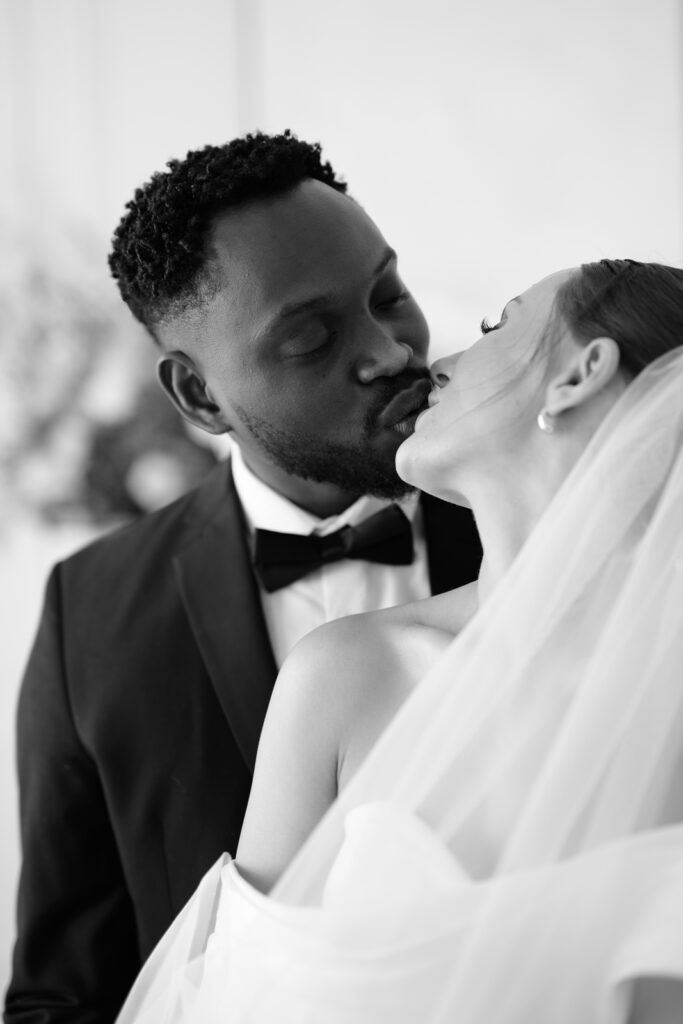
Shooting Weddings as Fashion Photography
As an experienced photographer shooting many editorial fashion and portraiture sessions, sometimes couples ask me about the world of fashion photography and how I apply it to the world of wedding photography.
To better answer this question, it helps to understand the process of a fashion shoot.
In a fashion shoot, the set of finished images is critical to not just the photographer, but also the client, the model agency, the model, and the creative team (consisting of the makeup artist, wardrobe stylist, and the hairstylist). The success of the final images depends on the vision of the photographer and his/her ability to properly communicate that vision both artistically and technically. Beyond just my skills behind the camera, I have to match the theme of shoot to the model that I cast, the story, and the location, often with a storyboard/Pinterest board well before the shoot. Even seemingly minute details such as the hairstyle or the makeup style has to be carefully selected to help elevate the images in helping communicate the story of the shoot. This attention to detail includes studying and choosing the right location and lighting for a pleasing colour palette that enhances the visual language of the images.
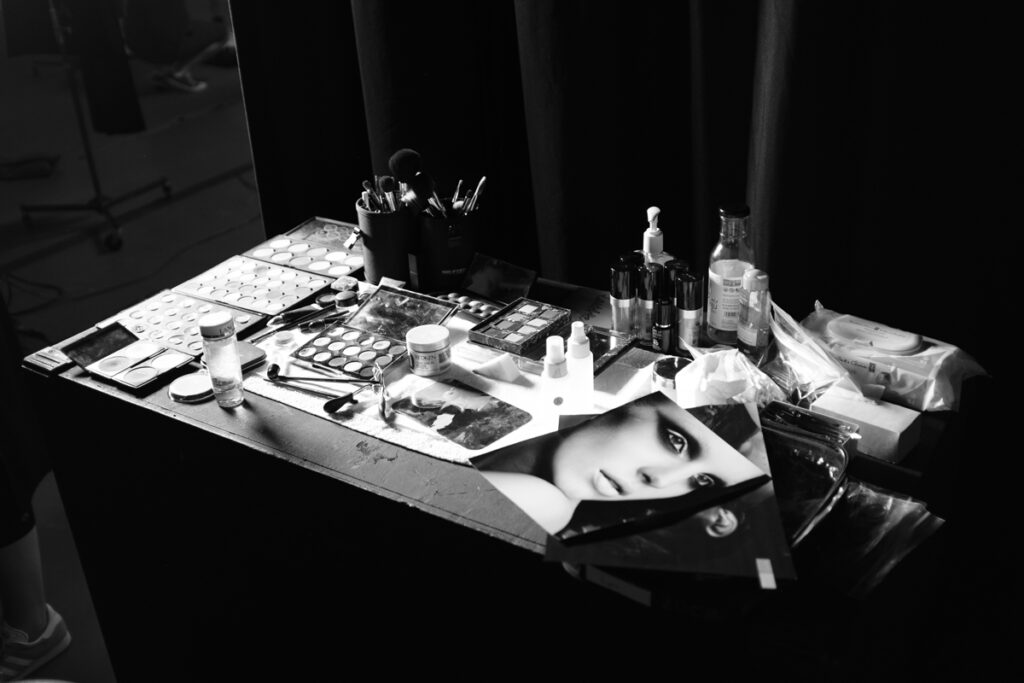
Hashing Out the Makeup Styling while Consulting the Inspiration Images
During the prep of the shoot itself, the selection of and matching of the wardrobe becomes an important consideration, especially since the clothing may not fit the model in the way that was imagined, or the initial selection of clothing may not be as well-coordinated as imagined. When the shoot itself is underway, I evaluate the level of experience of the model and provide direction if necessary. However, I am careful to balance the amount and type of direction that I give to the model so that the images and the model still look and feel alive. Although it may be preferable for some styles of photography, the last thing that I want is for my subjects to look like mannequins! All of this happens on the shoot while paying close attention to flattering lighting (if shooting outdoors with changing conditions and angles) and to details like fly-aways in the hair.
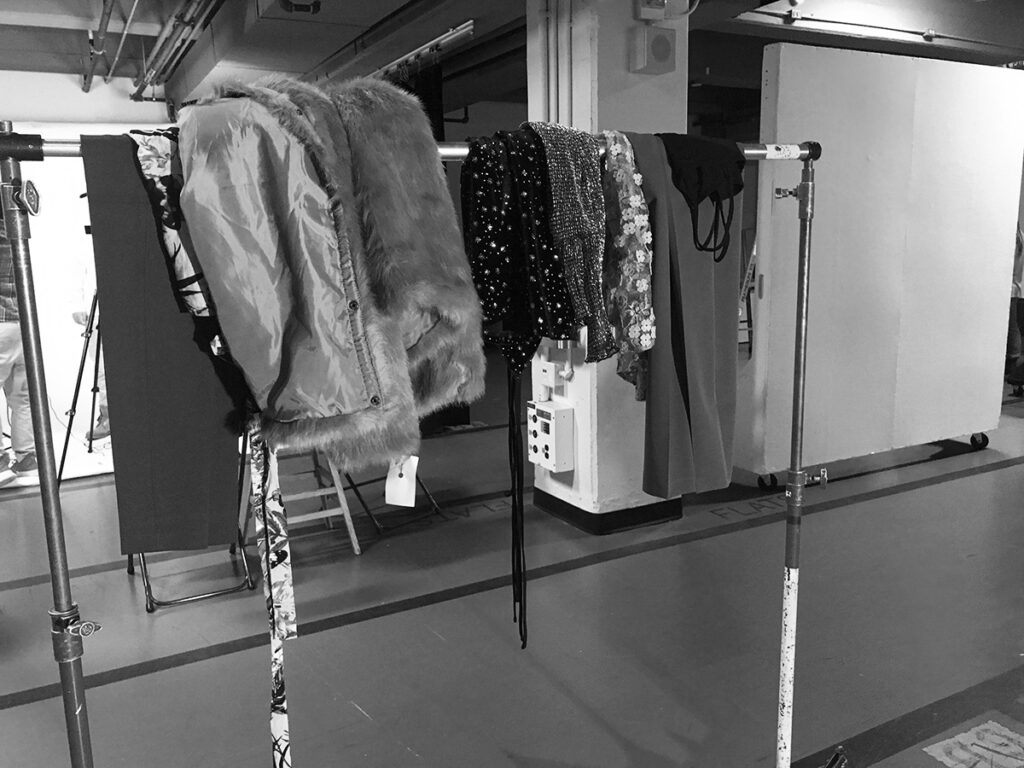
Wardrobe Changes on a Fashion Shoot
When the shoot is over, I spend a considerable amount of time to finesse the images in their colour rendition to elevate their visual quality. After all, photography is an artistic medium, and the role of colour is very important in the visual arts.
Throughout this whole process, I examine the theme and the many technical and creative considerations of the images very closely. The images from these shoots must meet a very high bar. After all, the clients of a fashion shoot are all seasoned creatives that are exposed to excellent imagery daily. This differs from more casual clients who may love photography, but do not have the same type of exposure to formulate the same very high bar. At the end of the day, the rigorous process and top-tier demands from fashion photography gives me a high level of expertise in creating beautiful images at your wedding, from knowing how to work professionally with makeup artists and hairstylists to giving just the right amount of direction in the shoot to editing the images just right. And, in an age where cameras are so accessible to many people, my years of experience in the rigorous world of fashion photography will certainly help differentiate and elevate your wedding beyond what you can expect from typical wedding photography creatives.
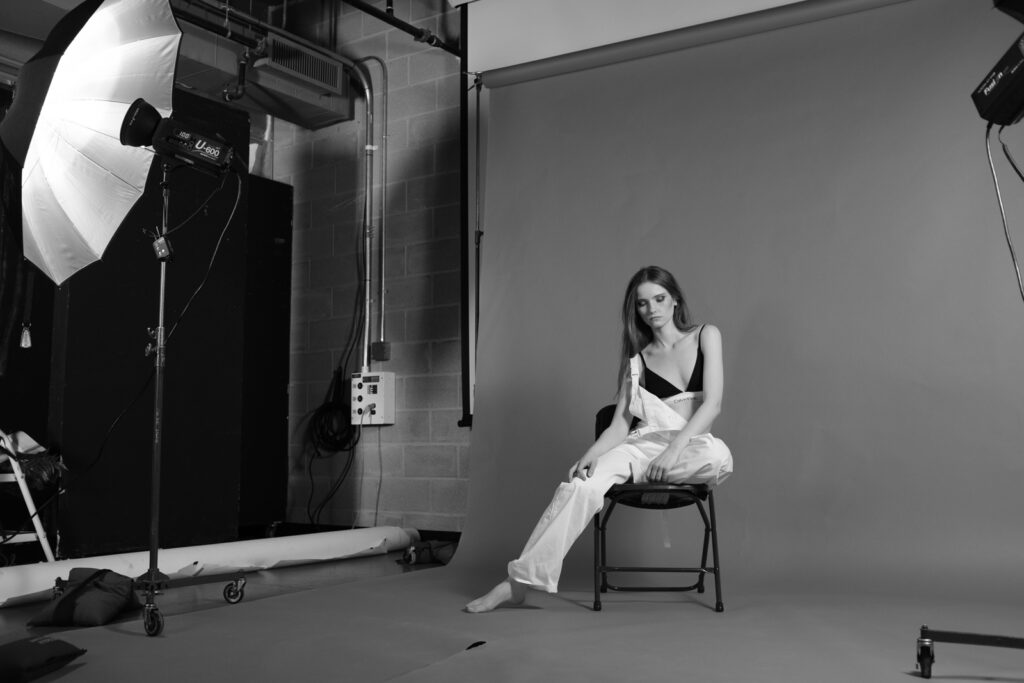
On Set with a Model in the Studio
Style and Elegance from Vintage Vogue Magazines
With the convenience of digital media and the rapid pace of change in the modern world, magazines and the printed media are mostly a thing of the past nowadays. Yet, in an era where visual trends are made popular and re-shared through social media such as Instagram or Pinterest, the truly fresh ideas often come from looking to the distant past.
Although I am in no way a collector, I have a small collection of vintage fashion magazines as a source of inspiration for my photography. Beyond just the cover art of each issue, there is an entire treasure trove of ideas inside each issue. In fact, some of these magazines date back so far that there were more illustrations than photographs – the type of illustrations that resemble a concept sketch from fashion designers.
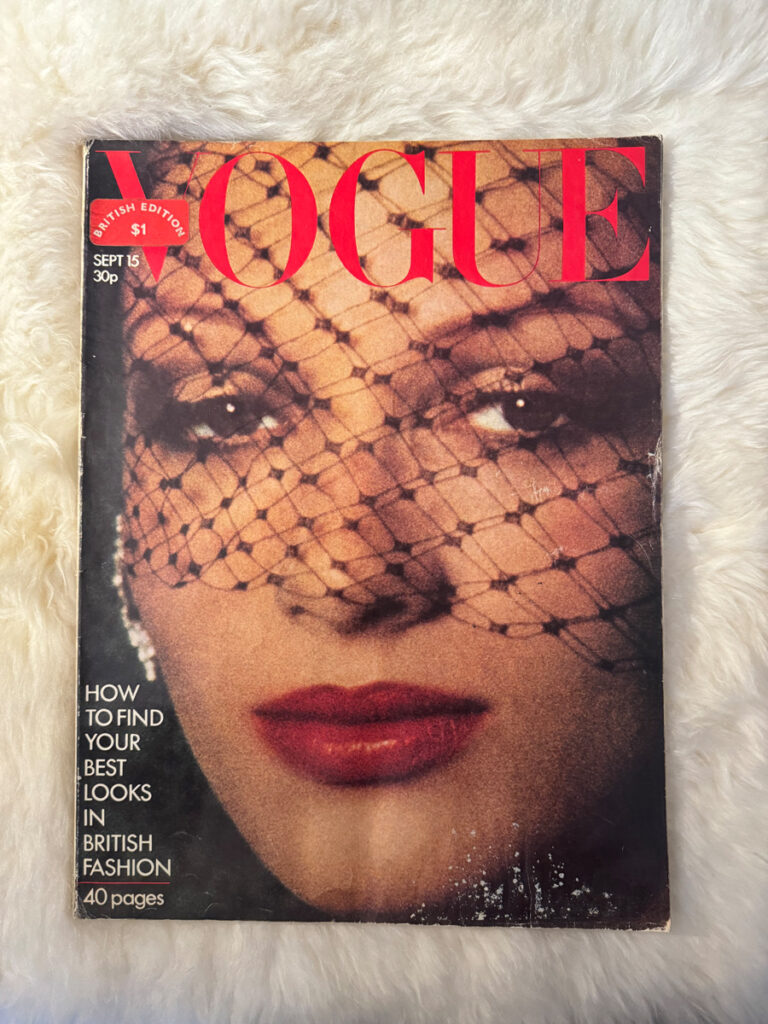
Gaining artistic inspiration from the pioneering fashion photographers of our time, to which many modern styles of photography today pays homage to, is an inspiring and refreshing look at the styles that started it all. The works of some of the greatest fashion photographers, such as Richard Avedon and Edward Steichen, can often be seen in the pages of these vintage fashion magazines.
The role of fashion and style was as important (if not more important) in those early years as they are today. Experiencing the zeitgeist of decades past where the absence of the internet made fashions, style, physical gatherings, and other socially-driven ideas paramount in importance and decadence. Naturally, this gave rise to many beautiful styles of art that defined the look of various generations.
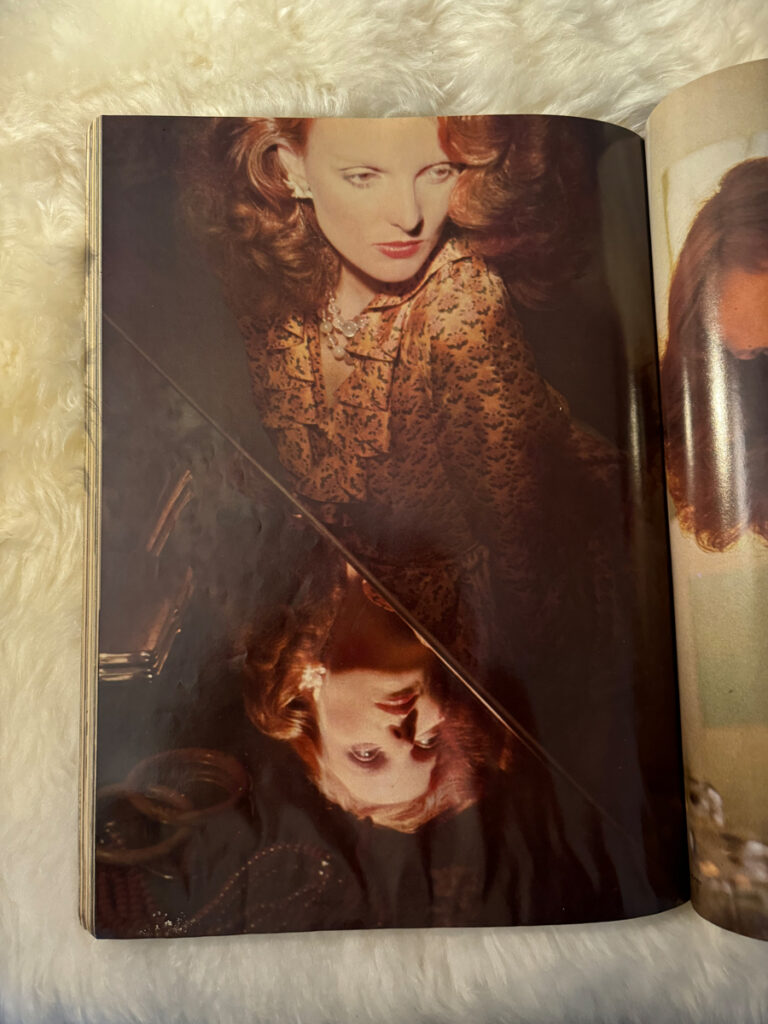
As you flip through the pages of these vintage fashion magazines, you are transported back to experience a curated collection from beautiful styles, from the fashion photography to the written articles that reflect the tastes of the time, and even to the unique style of the advertisements. Many of these styles often convey an effortless style that is highly refreshing compared to the more fragmented direction that we see today.
And, as a photographer, these unique styles of decades past help improve my eye for visual concepts and aesthetics. Through and through, each magazine issue feels like an experience and a gift that goes far beyond the imagery, the makeup, or the fashions of the time, and that is a beautiful thing to be inspired by.
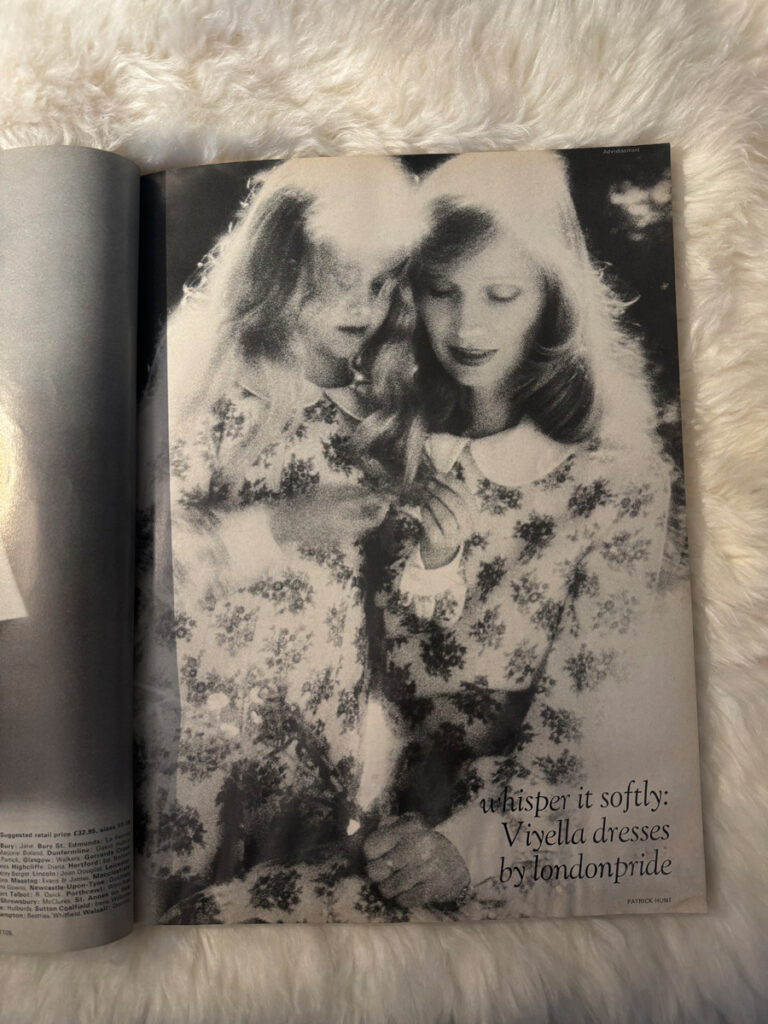
Revisiting the Grunge 90’s
Do you remember the grunge 90s? Perhaps most prominent from this era was the music of bands like Nirvana with their raw, melancholic emotions echoing through their music. Just as importantly, the 90s was an era in fashion that departed from the glitzy, polished looks of yesteryear, and instead replaced by what is later known as “Grunge” fashion, which many still consider to be a niche, counterculture genre of fashion. I can easily understand how many do not regard grunge as real fashion with its seemingly carelessly matched looks and mix and match of cheap and classy clothing. Yet, few can deny the influence of this era. Many who lived through this era may remember the debut of a then-unknown Kate Moss on her first magazine cover in “The Face” magazine in 1990. Those photos, titled “The Third Summer of Love” by photographer Corinne Day detailed a young and very skinny Kate Moss with a very non-traditional look. Despite widespread controversy and criticism, little did we know that this would kick off the start of the grunge 90s era in fashion and also launch this model’s career into super stardom.
For me, the raw, palpable, and often gritty atmosphere that was associated with grunge gave rise to a more accessible side of fashion that catered not just to the rich and privileged. Seeking inspiration from the music and energy of this era, I felt it appropriate to pay tribute to this style of a bygone decade. This shoot, titled “Not a Meth Lab” was named after stumbling across some random notes scribbled at the side of a building, which coincidentally captured the spirit of the times. In this series, the focus was to capture the highs and lows of the emotions of a girl’s adventures on a summer’s day. Captured with a documentary-like style, I felt that the model’s natural self became real and relatable to viewers long after the images were taken. And that, to me, is part of the lasting appeal and ethereal quality of the grunge era. I hope you enjoy the series here! P.S.: This is the first time I have photographed Monique and we were really able to channel the mood of the grunge era!
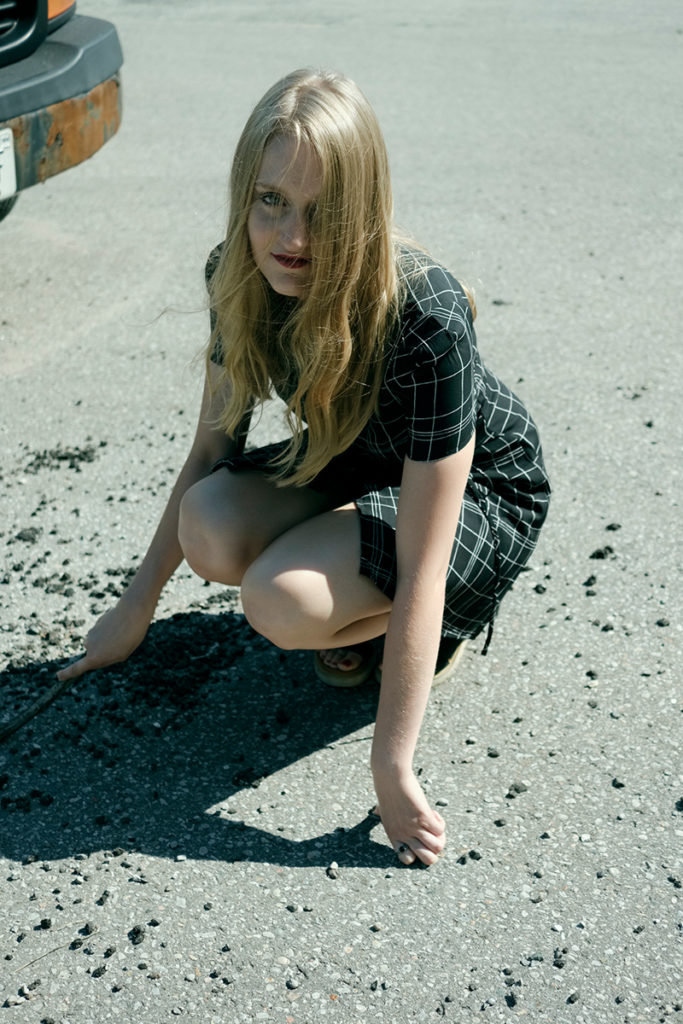
The Beauty of the American Southwest
Months and months have passed, and yet I still reminisce about the inspirational and beautiful world of the American Southwest. For the first time in my life, I have visited the Grand Canyon, Monument Valley, some smaller canyons along the way, and various ghost towns.
My flight landed in Las Vegas and from there my journey began in my rental car. Instead of a capable 4x4, I decided that a Dodge Challenger in black perfectly captured aligned with the mood of this barren land. After all, the famous vintage version of this car made just such a trip in the movie Vanishing Point, albeit in white.
Heeding advice from the locals, I went straight to the grocery store to pick up a 24-pack of water. “Believe me, you will need this in the desert.” Surely, I don’t doubt their advice, since we are talking about the desert after all. This is the real desert that I have seen in wild west movies, where roads stretched for miles and miles and the curvature of the earth becomes real and discernible with the naked eye. The blurriness of the outside world is just as real as heat visibly radiates off the ground.
There were several must-visit places on my 5 day itinerary, which honestly was very ambitious considering how far apart many of the destinations were. You see, before my trip, I had talked to someone from Arizona and gathered his top recommendations about where the best places to visit in this part of the world – places that define an authentic experience instead of one guided by the commercial gains of tourist websites.
I will never forget the first canyon I have visited, which is Coal Mine Canyon, a small canyon in Tuba City in Arizona. Like many locations in my itinerary, this was also recommended by a local and was breathtaking to behold. The earth was rocky and uneven with many slopes. Needless to say, tackling it with my rental car required alot of courage, for I braced myself for the worst where the car would get stuck in the middle of nowhere! The fact that I was well-prepared for this trip (with two cellphones, two GPS, extra battery packs to charge the phone) was still not enough, but I felt a true sense of adventure for the entire trip. When I finally visited the Grand Canyon, Google Maps took me on a “Special Route” that saved 1 hour from my commute. I would never forget what “Special Route” meant in Arizona as I was tasked with navigating the backyards of various farmers, going in circles, through valleys and through rock-laden paths for an hour as a detour to the Grand Canyon (with random cows in my way). This was a fantastic experience and completely surreal. It really helped me connect with nature and appreciate a different side of its beauty.
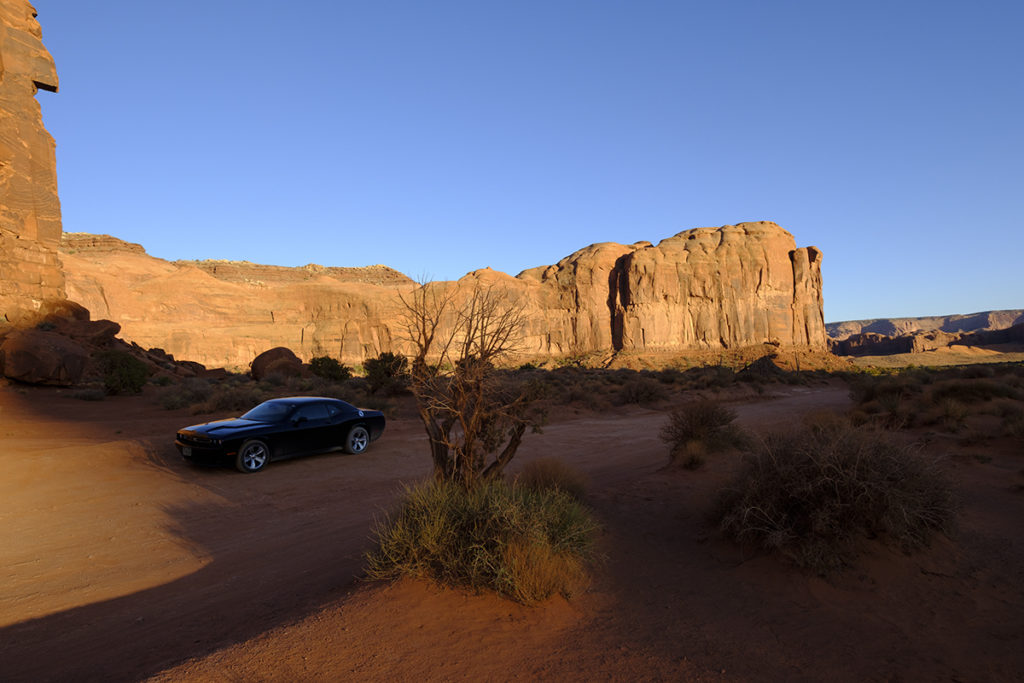
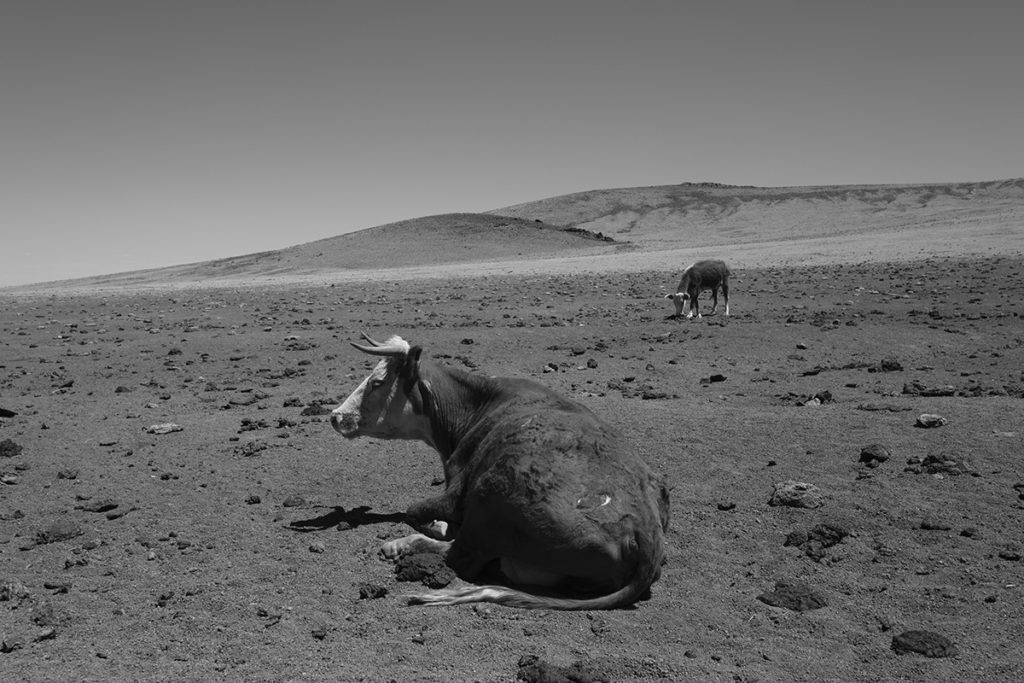
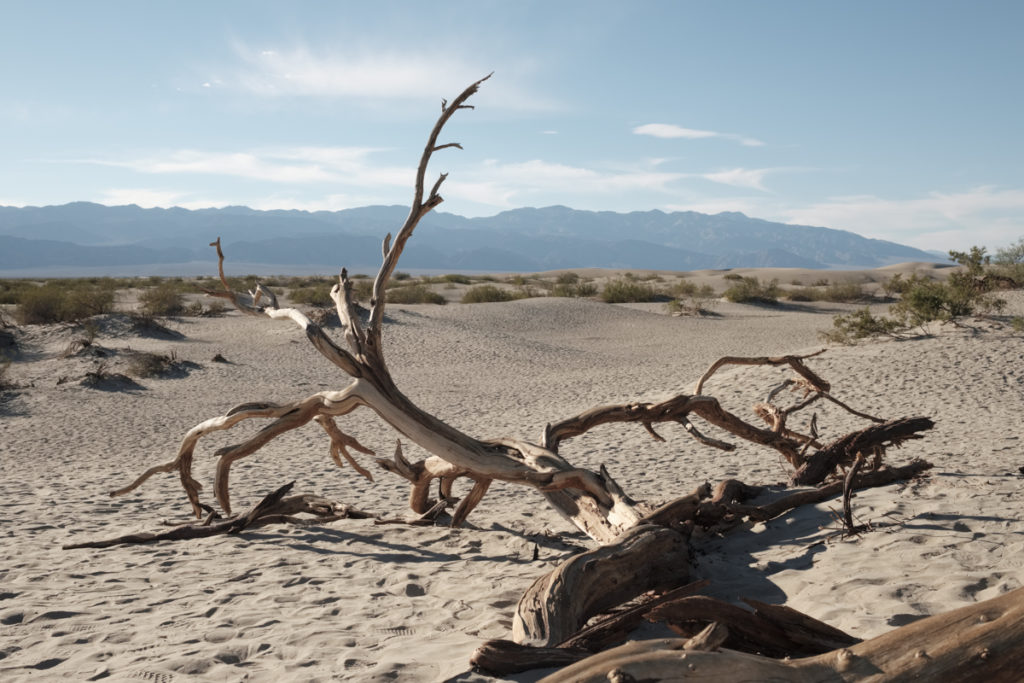
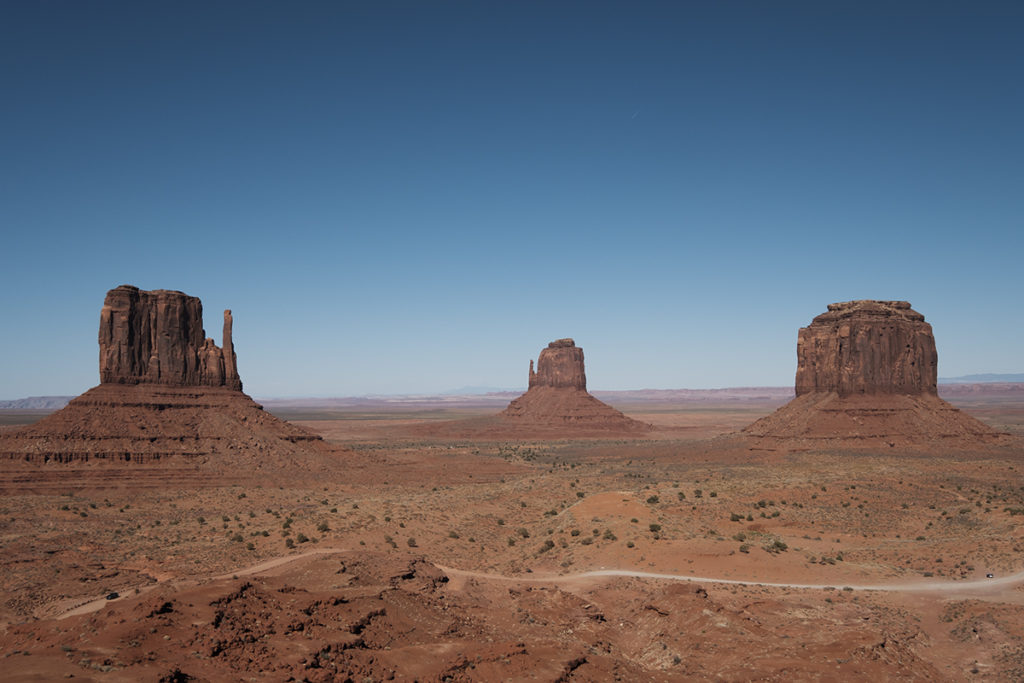
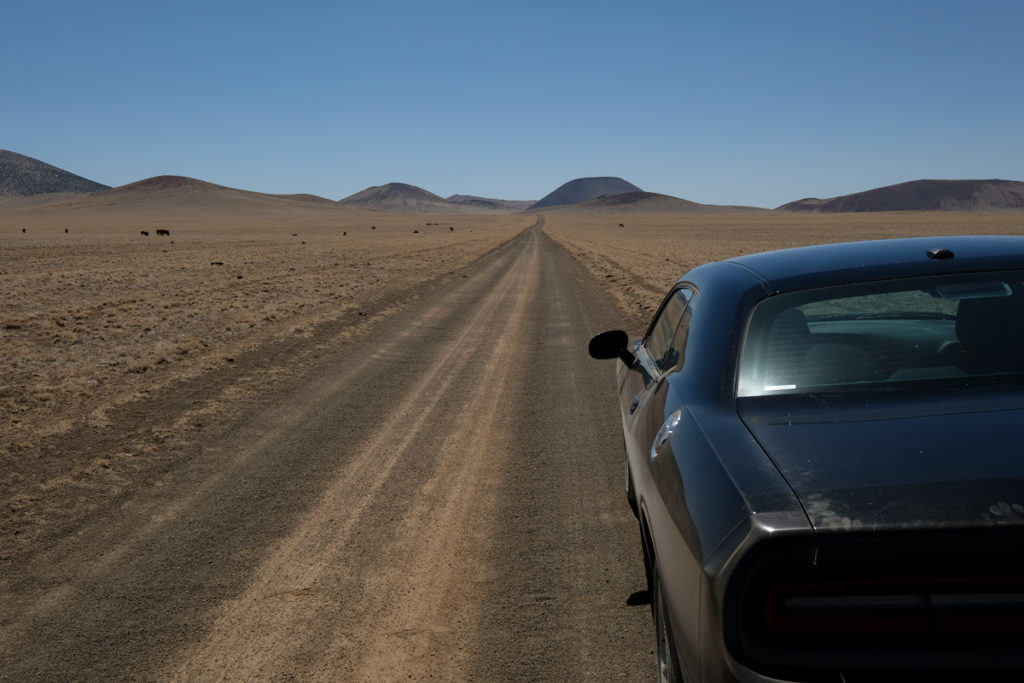
A Gem from the American Southwest
Have you been thinking about the source of your inspiration lately? I believe that inspiration is all around us everyday and comes to us from a multitude of ways. As a photographer, the creative process necessarily requires inspiration. For me, my daily experiences serve as a prime source of inspiration.
In a typical day, I interact with dozens of people and ideas stem from conversations with these people or with the many places I have visited. In some cases, the ideas may not come until later, when I am able to connect my recent experience with some type of experience in my past. For example, I was in awe by the beautiful landscapes and ghost towns in the American Southwest late last year. During my travels, I explored tourist favourites such as the Grand Canyon, Monument Valley, and Death Valley. These are breathtaking places that would inspire many landscape photographers as they lose themselves in the wonder of nature. In fact, I plan to share some of my own photos from that experience in a later post.
But let’s not go off topic. During my visit, I realized in a series of vivid dreams that the golden vistas against the red earth of the American Southwest made for a perfect setting for an editorial story. The many ghost towns in Arizona (which were abandoned after copper mining in the local areas were no more), for instance, leave behind the magic of movie sets frozen in time. One such ghost town was near the edge of Arizona close to the Mexican border. I scouted out this location meticulously beforehand and coordinated both the story and the outfits to create the story of a girl who almost appeared to be lost in time. Indeed, the old, abandoned Shell gas station, classic cars from the 1950s, and old store front signs complete the atmosphere of this story. The results are in my recent project “Desert Rose” here on the website. I hope you enjoy this set of photos and that it serves as a source of inspiration for you as well!
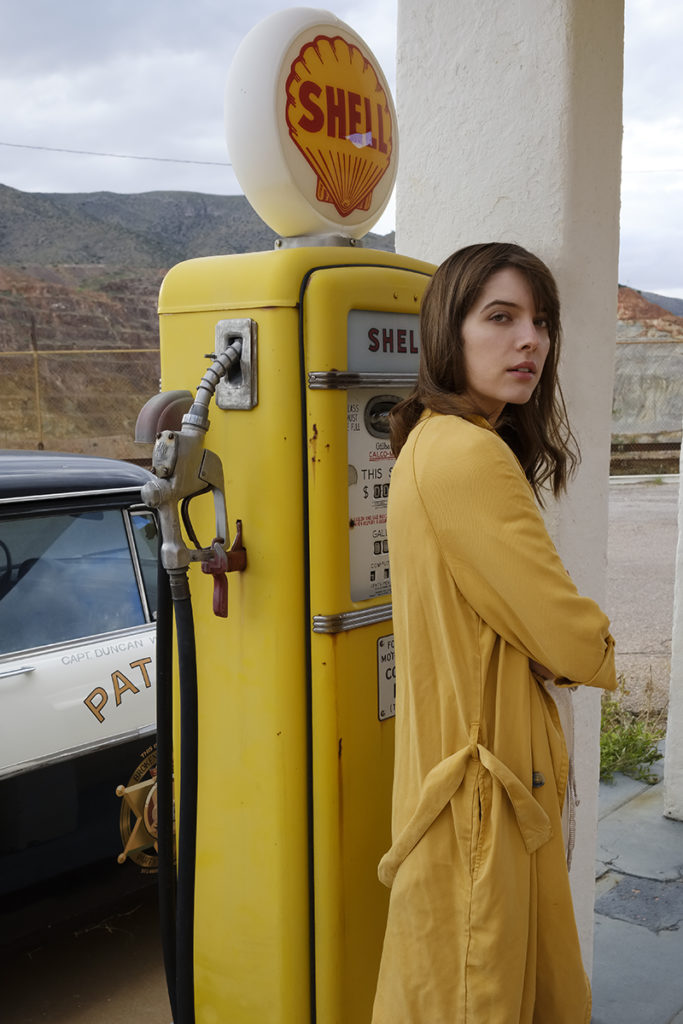
The Allure of Film Photography
There should be little surprise that film or “analog” photography continues to be widely discussed in modern times. With the ubiquity of digital cameras and an instant feedback loop right after taking each photo, why do we continue to cherish the traditional and slow way of photography?
In fact, on platforms like Instagram, we can easily find exclusive and popular hashtags associated with film photography, as well as many large, influential accounts which feature only film photographers. In the most extreme of cases, some photographers upload photos to Instagram while retaining the edges of the film frames, perhaps providing evidence that their photo was an act of artistry using film.
And indeed, film photography is a very intentional, labourious process that is surrounded by an aura of mystery for many. For today’s generation who have never used a film camera, the idea of photography with just 36 frames per roll and waiting a week for the film to develop seems unfathomable. Appropriately so, many can understand this point of view.
Yet, film photography teaches us many things, including a discipline to carefully, purposefully make the best use of each frame and to perfect our craft without the aid of digital tools like Photoshop. If you have spent any time in Photoshop, then understanding that last point is an easy one. After all, most photographers enjoy the experience of photography primarily and not so much the painstaking hours spent in front of a computer sorting, picking, and editing their photos.
Another benefit of film photography is the beautiful “film aesthetic”, which includes the characteristic looks and colours of the film chosen and the grain in the photos. As we witness the abundance of photography apps (which in many cases are natively available on most smartphones) with film filters, it becomes clear that there is a beautiful, pleasant look to film. While I agree with this, I also believe that choosing a specific film look without the ability to control the intensity of the filter, the saturation of colours, etc. creates an artistic limitation on how each photo can be perfected.
To be honest, I am not a proponent of either digital or analog photography. I believe strongly that a great photo is just that, and the decision between film and digital photography is less important. Photography is about telling beautiful stories, and the presence or absence of a “film aesthetic” is not enough to create compelling photos. Let’s not loose sight of that!
The Two Camps of Photographers
I always believe that the camera is a tool and should be as seamless as possible. The more transparent the camera is, the easier it could help us tell stories. However, the reality is that most photographers do not think about this very much. There are plenty of photographers who continually chase the latest and greatest gear, thinking that “if only” they had a sharper lens, or a faster camera, or any other number of reasons – that their photography would improve by leaps and bounds. Of course, we all know that this simply is not true. In fact, photographers are often split into two main camps, 1) those who always upgrade to the latest equipment and are gadgeteers at heart, and 2) those who are spellbound by the art of photography so much that they rarely seek out reasons to upgrade their equipment.
While we all love shiny new gear and better equipment can make our lives easier, they should by no means be the focus. This does not mean to skimp on good equipment. It simply means that the energy is best invested in creating art with photography. Just like money, time is a currency, and is arguably even more valuable as it just so easily trickles away, never to be replenished again. Undoubtedly, we could all choose to invest the currency of time in producing better photography. Gone are the days when photography is a slow, drawn out process that requires tripods and long exposure times. Creating art with photography is an intentional process requiring technique and creativity in spades. At the end of the day, the camera is just the tool that photographers use to tell stories. Similarly, writers rely on the pen and painters on their brush. To draw some parallels with photography, it would be silly to think that a better pen would create better writing. The only time that such would be true is if the writing is judged simply on its aesthetics and not at all on the ideas and stories created by the author. Now, that would be something else entirely!
Late last year, I was invited by Fuji X Passion magazine to write an article of interest, and in it, I explored the true meaning of photographs. The story was published in issue #18 of the magazine where I decided to completely omit the camera settings used for each of the photos so that readers could adopt a similar mindset. That’s a long, drawn out story for another time though. For now, I hope you gathered a newfound inspiration for crafting your next photography project! So go out there, experiment, talk to other artists, and try out different creative ideas for your photography. Know that your equipment is not the limitation and be dedicated to the craft. I promise you that your photography will improve by leaps and bounds!
Exploring Vintage 70s Vibes
What do the 70s remind you of? For me, it is a period of optimism that followed from the golden age of newfound freedom in America beginning in the 60s. Synonymous with this era is the music of Fleetwood Mac, with hits like Dreams and Rhiannon that is still remembered today. Coincidentally, this period also gave us the boho vibes that is beautiful and still very much relevant today. Brands like Top Shop and Free People continue to captivate us with this aesthetic.
And what about photography? Most photos from this era carried flat, low saturation aesthetic that is easily recognizable when combined with the fashion of this period. The portraits also tend to show a sense of genuine feeling and expression in the subjects for one reason or another. Perhaps the times were simpler and the cultural and societal influences helped to create these honest emotions as well. I guess there is an understated beauty that is difficult to describe but easily recognized.
Recently, I took this inspiration and photographed Niki from Want Management. The wardrobe itself came from H&M and created the same honest emotions and mood that I remembered while studying the portraits of this era. Although this was just a small shoot, but I look forward to exploring more projects like this with a similar aesthetic from this magical period of time! Now, back to channeling more influences from 70s culture!
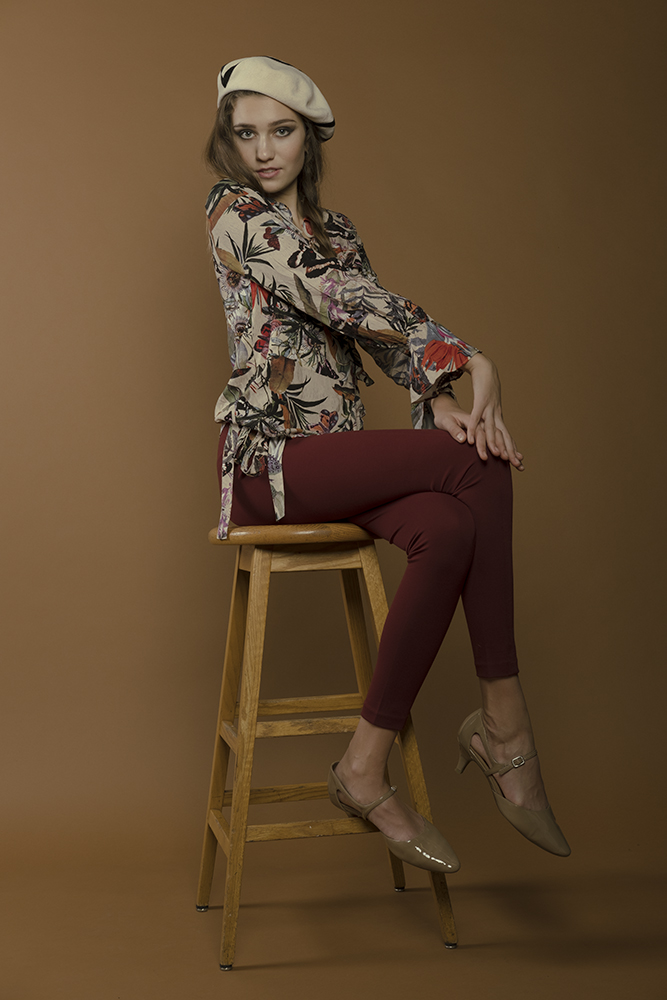
Cinematic Influences and the Story Behind Afternoon Embers
This month, I rewatched some old movies by Tarkovsky and felt inspired by the poetic harmony often described in his cinematic work. Most Tarkovsky films are quiet, atmospheric, and contemplative in ways that may not excite some of today’s audiences. However, also being a photographer, his films are centered on the philosophy that ideas and emotions do not always have to be through the spoken word. Many scenes from his films embody a surreal and hypnotic feeling. For example, in his 1975 film “The Mirror”, a women awakens to the sounds of dogs barking amid a beautiful orange sun, only for us to discover that the orange light was from the flames ravaging her house to the ground from a distance. Here, she watched in complete silence while the fire engulfs her home, seemingly unfazed externally while a million emotions are conjured in the viewers themselves. In a sense, the audience sees, the audience feels, and the audience even participates in sharing her quiet sorrows as the camera holds still on the burning house. Undeniably, the stillness, photographic aesthetic of the frame and the heightened emotions from sound of crackling wood under the immense fire is utterly palpable.
Thus, it is with this philosophical approach to creating art that compelled me to explore similar emotions in a new visual poetry series of photographs. In Canada this year, November was one of the coldest months of the year right before snowfall. Finding a suitable shooting location became a challenge, but I knew I wanted to convey the multitude of emotions I felt during the house burning scene in The Mirror. In film-making, we rely our visual and auditory signals to enjoy the story. On the other hand, photography entrusts emotions to be communicated visually first, with all our other senses brought forth as a result of our experiences and perceptions only. This is the challenge of photography, and yet it is also oddly beautiful when a photograph can communicate such deep, layered emotions in the viewer.
And so, on a cold but sunny November afternoon, our model Amy joined me in creating Afternoon Embers. The wardrobe was sourced from TopShop, helping to create a free spirited coachella vibes of the 70s in the approximate period of Tarkovsky’s films. We explored the interior of an old brick building, stumbling into hidden treasures along the way. As the sun was beginning to set, the lighting was perfect as it peered through the hazy windows as though the light was providing Amy with a gentle embrace. With Amy’s dark dress and the shadows cast on Amy from the soft, orange light, the sun reminded me of embers burning in the night. This was how Afternoon Embers came to be. I won’t speak too much about the visual concept of the photo as I hope you will enjoy its emotions within. This photo was unedited and easily became one of my last and favourite photographs that I have taken this year. You can see it featured here.
